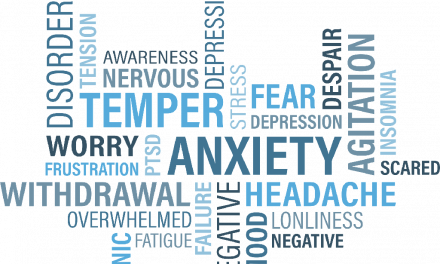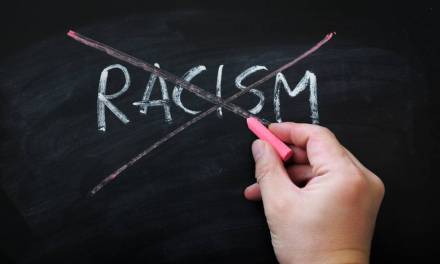The Kidscape charity works with children and young people under the age of 16, along with their parents/carers and those that work with young people, such as teachers, to prevent bullying. The website provides a range of information, resources and training to protect vulnerable pupils and reduce bullying.
I spoke to Claude Knights, the CEO of Kidscape and asked her some questions about the best methods of dealing with bullying in schools.
How should a school define bullying?
It’s important that the definition addresses all forms of bullying. The definition from the Anti-Bullying Alliance is a very good benchmark; it is the one we would like all schools to have.
“There is no legal definition for bullying but it is usually understood as repeated physically or/and emotionally hurtful behaviour. It can take many forms, including:
- Physical bullying: it involves hitting, kicking and other types of physical harm including destruction of one’s possessions
- Verbal bullying: it encompasses name-calling, teasing, intimidating and spreading hurtful rumours
- Cyber-bullying: it involves sending harassing, threatening and humiliating text messages, emails, posts, blogs, etc. as well as spreading hurtful rumours via the Internet and calling on the phone at inappropriate hours” Anti-Bullying Alliance
What anti-bullying policies should a school have in place?
The implementation of the anti-bullying policy is the key thing. A good anti-bullying policy should:
- Be continually enforced and supported by all staff members, teachers, parents, stakeholders and pupils
- Show a zero-tolerance approach
- Cover all aspects of bullying, including racism, homophobia and cyber-bullying
- Recognise that the different types of bullying don’t work in isolation
- Be reviewed periodically and kept up to date
- Have a specific child-centred classroom version
- Have resources and strategies for teachers and staff members to refer to
- Not be excessively long
- Have a specific anti-bullying policy that’s on its own – some schools’ policies are buried within behaviour and discipline policies
Are we currently effective in our methods of tackling bullying?
Most research still shows that 1 in 5 children say that they suffer bullying in some form or other. It’s still the most reported incident of concern, especially in schools. I think we are doing a lot more than ever before to tackle the issue of bullying. The main thing is the listening ear. Initiatives such as The Diana Award, anti-bullying ambassadors in schools and the peer-support movement means there is more awareness.
There is a lot of work going on, but there are still some black holes and unfortunately a lot of denial. There are too many parents saying that their school won’t admit there is a bullying problem; they dress it up in some way because they are concerned about their reputation, the way that they are perceived. That’s very painful for the victim.
From your experience, what is the most effective strategy for dealing with bullying in schools?
Making pupils aware that it’s not about changing who they are is important. There is a pretty effective strategy which is the fogging technique: rather than inflaming a situation with a retort, the victim can respond with a neutral comment which will give less cause for a situation to escalate.
The victim surrounds themselves with a protective fog which absorbs the insult. The bully wants a reaction and the victim isn’t giving it. Instead of being a jagged mountain that a bully can walk all over, the target becomes an ice mountain, which the bully slides off.
What advice would you give to a pupil being bullied?
- Firstly, nobody deserves to be bullied – it’s not their fault
- Don’t believe the rubbish that the bully is putting into their head.
- Tell somebody – If the first person doesn’t believe or support them, they need to keep telling until somebody is willing to do something about it.
- The most important thing for a victim is to not let a bully make them feel that they are not lovable or not worthy. Their self-esteem needs to be protected. The bully has problems too, but that doesn’t excuse it.
What is the best way to deal with a bully?
The bully and the victim have self-confidence issues. You do get the arrogant bully that you think has too much confidence, but happy people don’t bully. There’s something going wrong in their life. To help the bully we need to try and find out what they are trying to show or prove. Why do they need to make someone else feel unhappy to make them feel ok? We need to help them stop; the prognosis for their life is not good.
We would recommend assertiveness training for the bully and victim alike. The bully needs to understand the difference between aggression and assertion; the target needs to know the difference between being passive and assertive.
They both need to be able to look in the mirror, and at each other, and say “I’m ok and you’re ok”. A lot of work needs to go into building confidence and self-esteem. (See Kidscape’s website for information on Zap assertiveness training programmes.)
The main thing that a bully has to be made to understand is that there should be consequences to actions. A school which is bully-proof would have an understanding in young people’s minds that there are always consequences to actions; you can’t just punch someone or send them a hate email with no repercussions.
Sanctions need to address the issue and lead to understanding and hopefully, in most cases, prevent repeat behaviour. The sanction needs to be appropriate in relation to the type of bullying; the punishment has to fit the crime. It also needs to be age appropriate. Escalation is also important; you can’t start at the top meaning no further course of action can be taken if the issue is repeated.
The victim, and the rest of the school, needs to see that justice has been done; the message it sends is logical and fair.
What would you say to a school that says it doesn’t have a bullying problem?
A school may think it’s doing itself some good but it isn’t. A head teacher that stands up and says “there is no bullying in my school” is either very brave or very foolish because there is bullying in every school. Even something coming into the equation such as a new pupil or new teacher can entirely change the school.
We can’t say that there is no bullying. I think the schools that are aware of that are tackling it by having constant reminders that bullying and unkindness is not part of the school ethos. These schools don’t just take part in a one-off anti-bullying week, for example. These schools also have a culture of telling, the pupils don’t remain bystanders; they want a happy, bully-free school.
Does society tackle bullying enough in the media?
The media has a responsibility to not condone bullying. I think the media has a lot to answer for. One of the problems with television at the moment, particularly with game shows and talent shows, there is often humiliation involved when eliminating those taking part. The way it is done doesn’t take account of a person’s self-esteem. Children copy; if it is seen on TV, they see it as an acceptable way to act themselves. People are influenced by the way they see others treated.
We need media education. Take any magazine: even with the awareness that we have, it is still predominantly slim, very attractive people that are represented. The way that a celebrity is slated if they dare to put on a few pounds is such an influence on young people; we can see this in the amount of young people developing eating disorders and having body image problems.
We need to help young people understand the way in which media distorts. We need to teach them to read media more efficiently. They need to be aware of how they are being manipulated by the media so they don’t allow it to disfigure their thinking.









